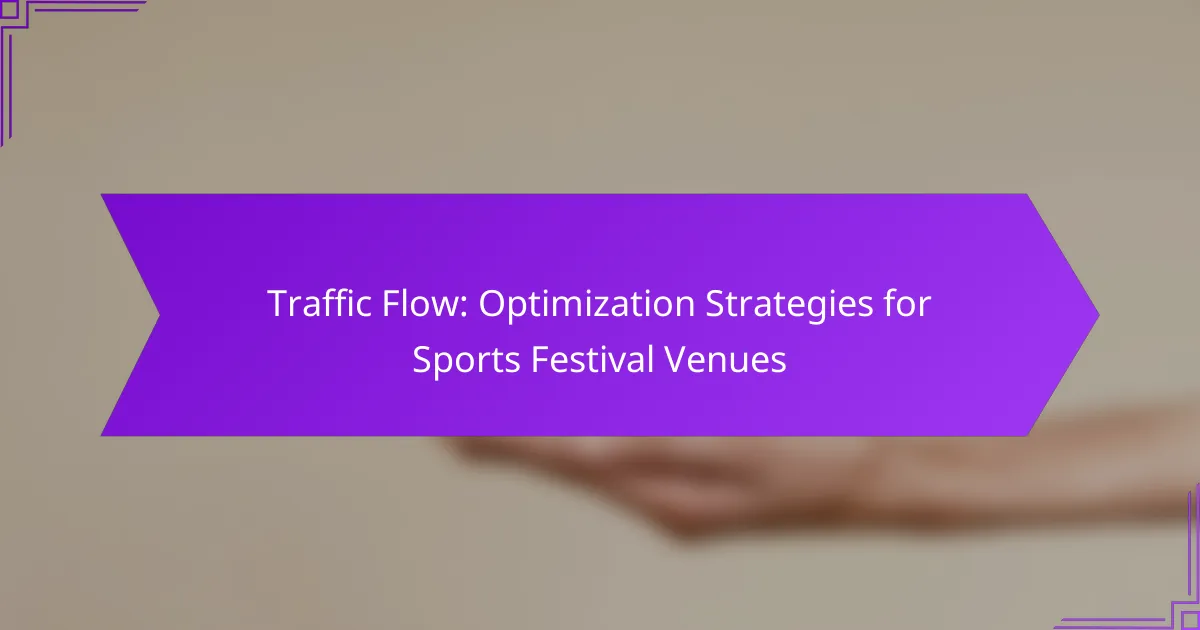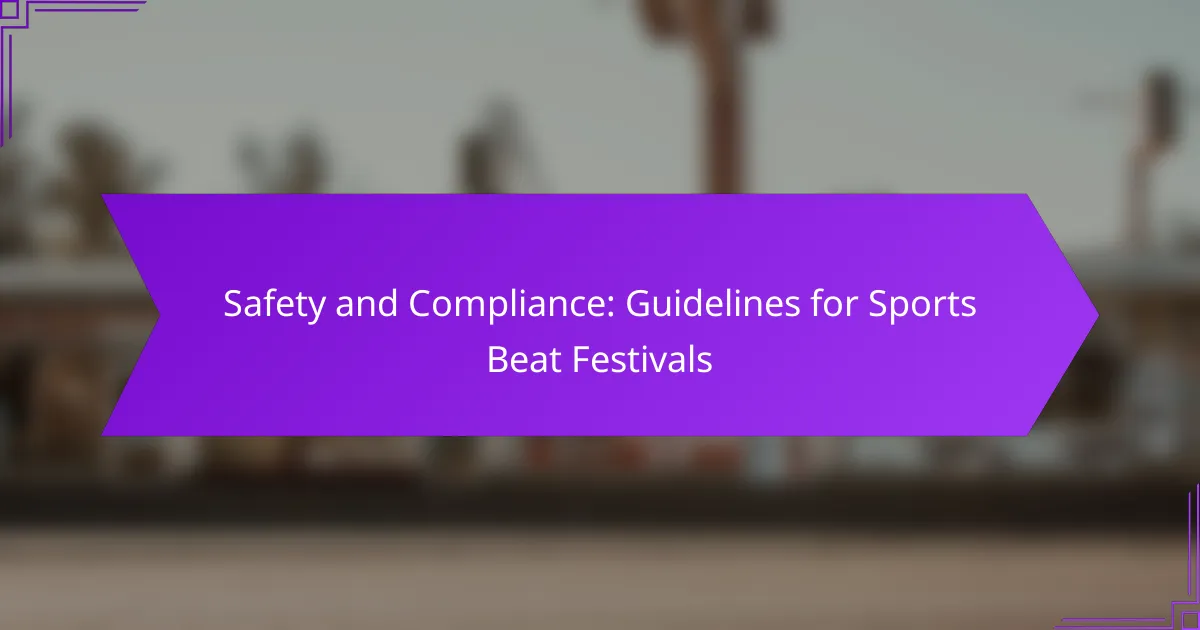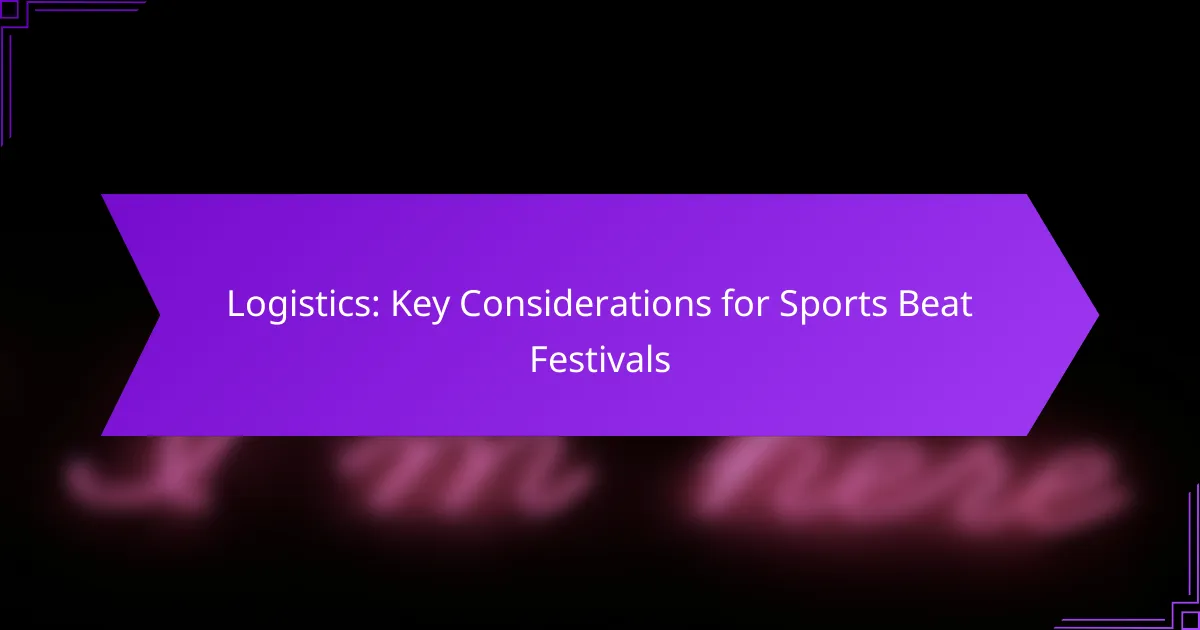Optimizing traffic flow at sports festival venues is crucial for enhancing attendee experience and ensuring safety. Strategies such as real-time traffic management, designated entry and exit points, and mobile app navigation can streamline movement and reduce congestion. By leveraging technology and thoughtful venue design, organizers can create a more efficient and enjoyable environment for all participants.
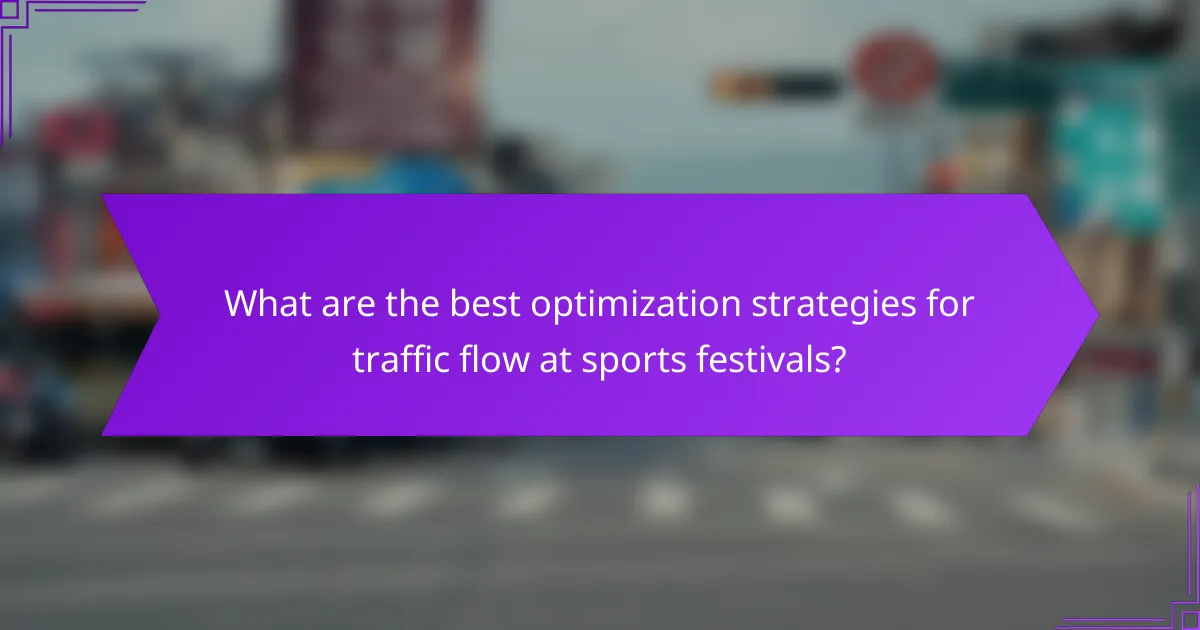
What are the best optimization strategies for traffic flow at sports festivals?
The best optimization strategies for traffic flow at sports festivals include real-time traffic management, designated entry and exit points, mobile app navigation features, enhanced public transportation access, and pedestrian-friendly zones. Implementing these strategies can significantly improve attendee movement and overall experience at the event.
Utilizing real-time traffic management systems
Real-time traffic management systems use data analytics and monitoring tools to manage the flow of vehicles and pedestrians dynamically. By analyzing traffic patterns and adjusting signals or signage accordingly, these systems can reduce congestion and improve safety.
Event organizers should consider integrating sensors and cameras to gather data on attendee movement. This information can help in making immediate adjustments, such as redirecting traffic or modifying entry points based on current conditions.
Implementing designated entry and exit points
Designated entry and exit points streamline the flow of attendees, minimizing bottlenecks and confusion. Clearly marked pathways and signage guide visitors to these points, ensuring a smoother experience.
It’s crucial to plan these points based on venue layout and expected crowd sizes. For instance, having multiple entry points can help distribute attendees more evenly, reducing wait times and enhancing safety.
Incorporating mobile app navigation features
Mobile app navigation features provide attendees with real-time information about the venue, including traffic flow, wait times, and alternative routes. This empowers users to make informed decisions about their movements during the event.
Event organizers should consider partnering with app developers to create user-friendly interfaces that include maps, alerts, and updates. Encouraging attendees to download the app before arrival can enhance their experience and improve overall traffic management.
Enhancing public transportation access
Improving public transportation access to sports festivals can significantly reduce the number of vehicles on-site, alleviating traffic congestion. Collaborating with local transit authorities to provide shuttle services or extended routes during the event can encourage attendees to use public transport.
Organizers should promote these transportation options in advance, highlighting any discounts or special services available for festival-goers. This can lead to a more sustainable event and a better experience for all attendees.
Creating pedestrian-friendly zones
Designating pedestrian-friendly zones around the venue enhances safety and encourages walking, reducing traffic congestion. These zones can include closed streets or pathways that prioritize foot traffic, making it easier for attendees to navigate the area.
Event planners should ensure that these zones are well-marked and equipped with amenities such as seating, shade, and food vendors. This not only improves traffic flow but also enhances the overall festival atmosphere, making it more enjoyable for everyone involved.
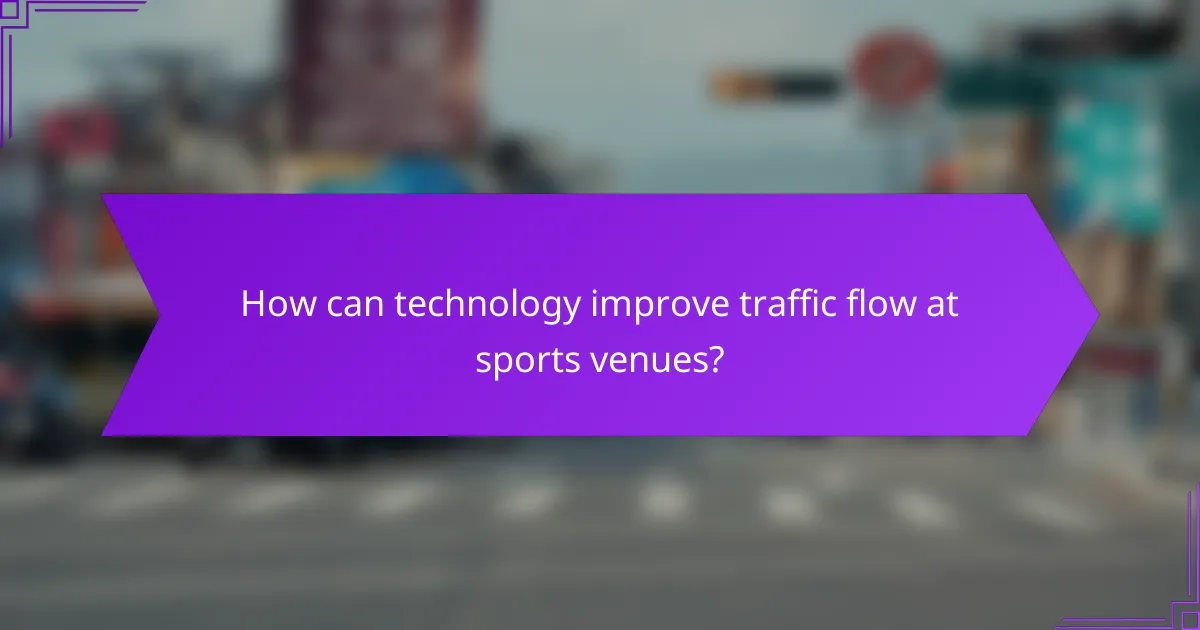
How can technology improve traffic flow at sports venues?
Technology can significantly enhance traffic flow at sports venues by utilizing data-driven solutions to manage crowds and optimize transportation. By implementing advanced systems, venues can reduce congestion, improve safety, and enhance the overall visitor experience.
Using AI for crowd prediction
AI can analyze historical attendance data and real-time information to predict crowd movements at sports events. This allows venue operators to proactively manage entry points and allocate staff where needed, reducing wait times and bottlenecks.
For effective implementation, venues should consider integrating AI algorithms that account for variables like weather, event type, and local traffic conditions. Regular updates to the AI model can improve accuracy over time.
Integrating smart traffic signals
Smart traffic signals can adapt to real-time traffic conditions, optimizing the flow of vehicles around sports venues. These systems can prioritize routes based on event schedules, ensuring that traffic is directed efficiently during peak times.
When implementing smart signals, it’s important to coordinate with local traffic management authorities to ensure compatibility with existing infrastructure. Regular maintenance and updates are crucial for maintaining system effectiveness.
Deploying drone surveillance for monitoring
Drones equipped with cameras can provide real-time aerial views of traffic conditions around sports venues. This technology allows for quick identification of congestion points and enables rapid response to emerging issues.
For successful deployment, venues should establish clear guidelines for drone usage, including compliance with local regulations and privacy considerations. Training staff to interpret drone data can enhance decision-making during events.
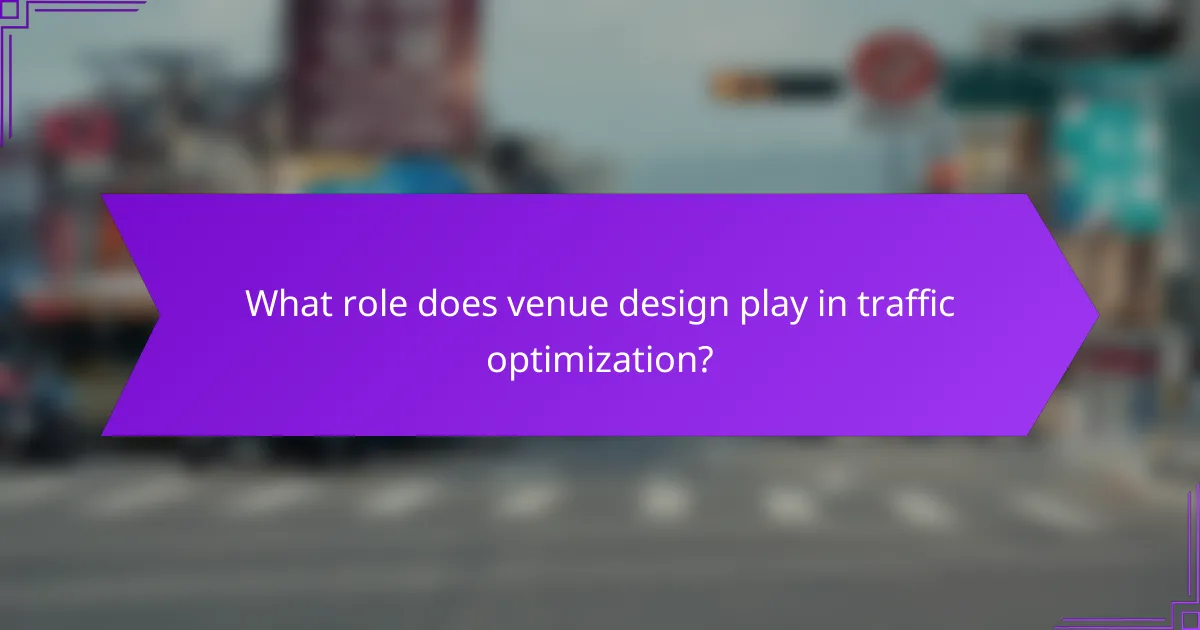
What role does venue design play in traffic optimization?
Venue design significantly influences traffic optimization by determining how attendees move through the space. Effective layouts can minimize congestion, enhance accessibility, and improve overall visitor experience during sports festivals.
Designing multi-use pathways
Multi-use pathways allow for the simultaneous movement of pedestrians, cyclists, and emergency vehicles, reducing bottlenecks. When designing these pathways, consider widths of at least 3-4 meters to accommodate high foot traffic during peak times.
Incorporating flexible pathways that can be adjusted based on the event’s needs is essential. For example, using temporary barriers can help direct crowds during busy periods, ensuring smooth flow and safety.
Incorporating flexible seating arrangements
Flexible seating arrangements can adapt to different events and crowd sizes, which is crucial for optimizing traffic flow. Consider using movable chairs or bleachers that can be easily reconfigured based on the expected attendance.
Additionally, creating designated zones for seating can help manage crowd distribution. For instance, having separate areas for families, VIPs, and general admission can prevent overcrowding in specific sections.
Creating clear signage and wayfinding systems
Clear signage and effective wayfinding systems are vital for guiding attendees through the venue. Use large, easily readable signs with arrows and symbols to direct foot traffic toward entrances, exits, and amenities.
Incorporating digital displays can enhance wayfinding by providing real-time updates on event schedules and crowd levels. Ensure that signage is multilingual if the event attracts international visitors, promoting inclusivity and ease of navigation.
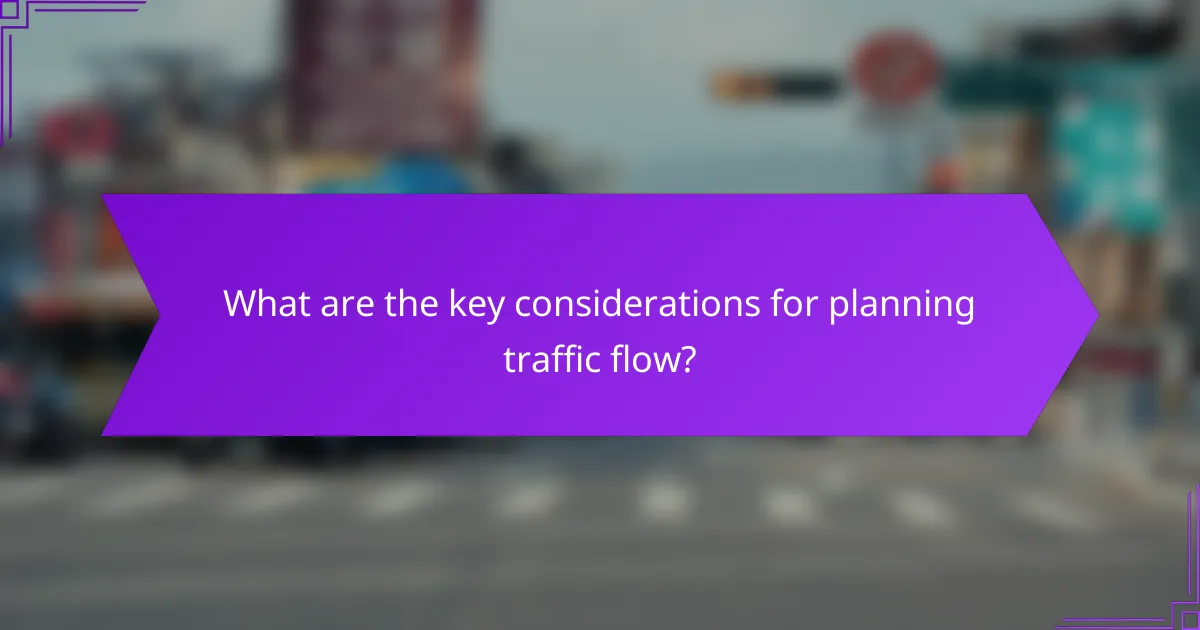
What are the key considerations for planning traffic flow?
Key considerations for planning traffic flow at sports festival venues include understanding the venue’s capacity, peak attendance times, and the local infrastructure’s capabilities. These factors help ensure smooth movement of attendees, minimizing congestion and enhancing the overall experience.
Assessing venue capacity and layout
Evaluating the venue’s capacity and layout is crucial for effective traffic flow. This involves determining how many attendees the venue can accommodate comfortably while allowing for safe movement. Considerations should include the number of entrances and exits, the width of pathways, and the arrangement of seating and facilities.
For example, a venue with a capacity of 5,000 attendees should ideally have multiple access points to prevent bottlenecks. Using a layout that promotes clear pathways can significantly enhance attendee movement and reduce wait times.
Understanding peak attendance times
Identifying peak attendance times is essential for optimizing traffic flow during a sports festival. These peak periods often coincide with event start times, intermissions, or popular activities. Analyzing historical attendance data can help predict these busy times.
To manage peak times effectively, consider staggering entry times or providing incentives for attendees to arrive early. This can help distribute the flow of people more evenly throughout the event, reducing congestion during critical moments.
Evaluating local infrastructure capabilities
Assessing the local infrastructure is vital for supporting the expected traffic flow. This includes evaluating public transportation options, parking facilities, and road access. Understanding the capacity of local roads and the availability of public transport can inform planning decisions.
For instance, if a venue is located in an area with limited parking, it may be beneficial to coordinate shuttle services from nearby locations. Additionally, working with local authorities to manage traffic signals and road closures can further enhance the flow of attendees to and from the venue.
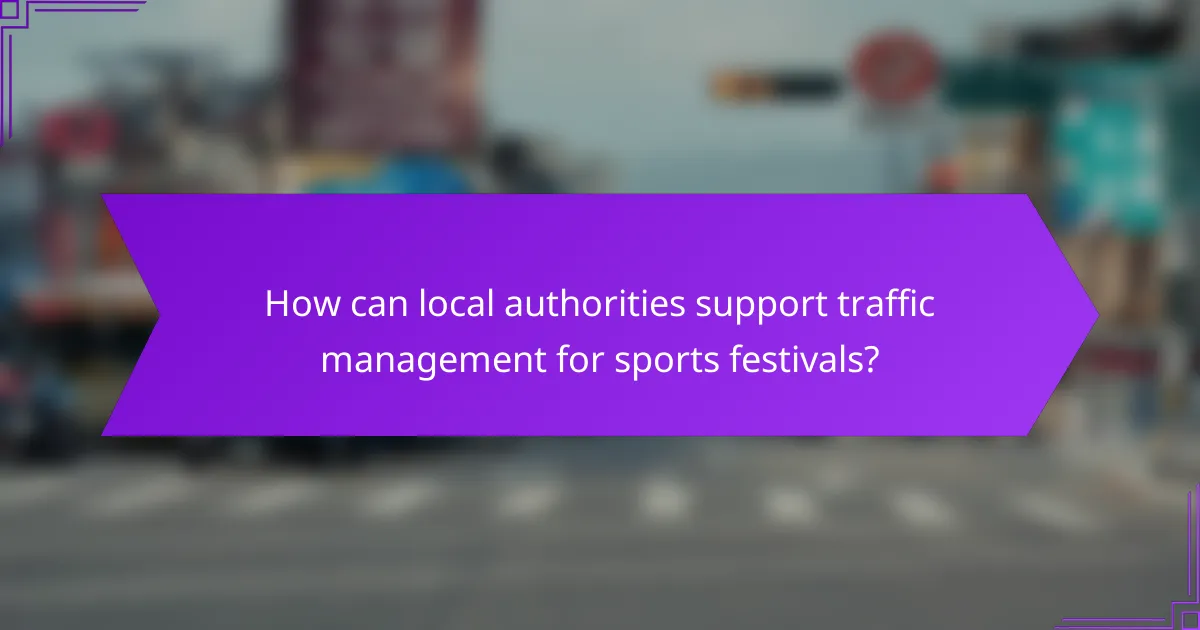
How can local authorities support traffic management for sports festivals?
Local authorities can enhance traffic management for sports festivals by implementing effective planning, coordination, and communication strategies. These measures ensure smooth traffic flow, minimize congestion, and enhance safety for attendees and participants.
Traffic Planning and Infrastructure Improvements
Effective traffic planning involves assessing the venue’s layout and surrounding road networks to identify potential bottlenecks. Authorities should consider temporary infrastructure improvements, such as additional signage, dedicated lanes for public transport, and pedestrian pathways to facilitate movement.
For example, creating designated drop-off zones for taxis and rideshare services can reduce congestion near the venue entrance. Additionally, ensuring that public transport schedules align with event timings can encourage attendees to use these services, further alleviating road traffic.
Coordination with Local Law Enforcement
Collaboration with local law enforcement is crucial for managing traffic flow during sports festivals. Authorities should establish a clear communication plan to deploy officers at key intersections and high-traffic areas to direct vehicles and pedestrians effectively.
Regular briefings before the event can help ensure that law enforcement is aware of the traffic management strategies in place. This proactive approach can significantly reduce the likelihood of accidents and improve overall safety during the festival.
Public Communication and Information Dissemination
Informing the public about traffic management measures is essential for smooth operations. Local authorities should utilize various communication channels, such as social media, local news outlets, and community boards, to share information about road closures, parking options, and public transport availability.
Providing real-time updates during the event can also help attendees make informed decisions about their travel routes. For instance, using mobile apps or text alerts to notify attendees of traffic conditions can enhance their experience and reduce frustration.
